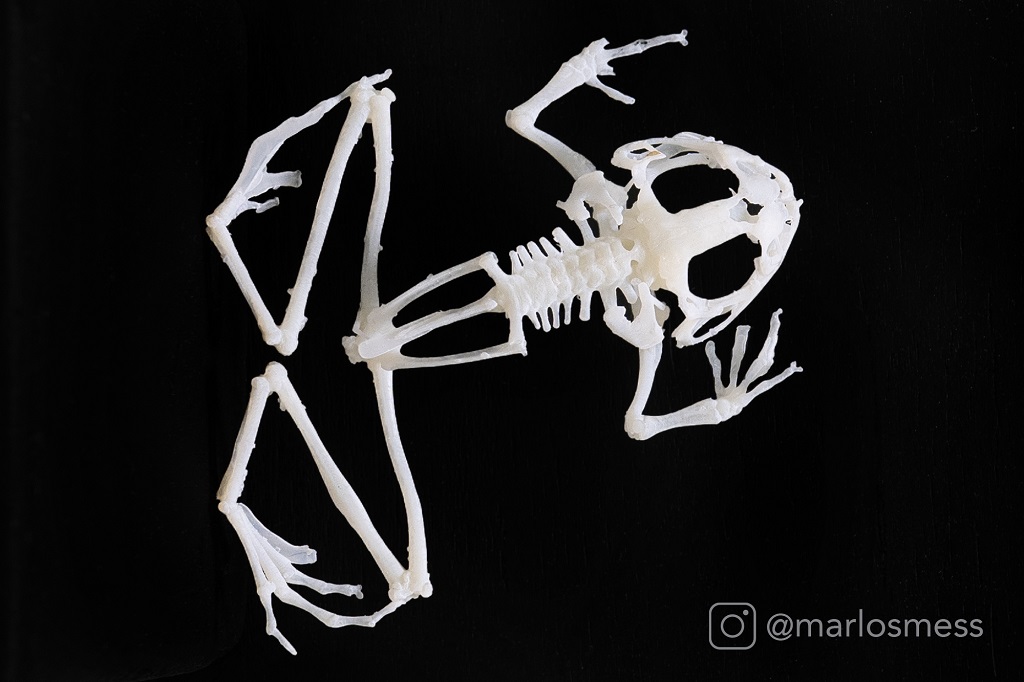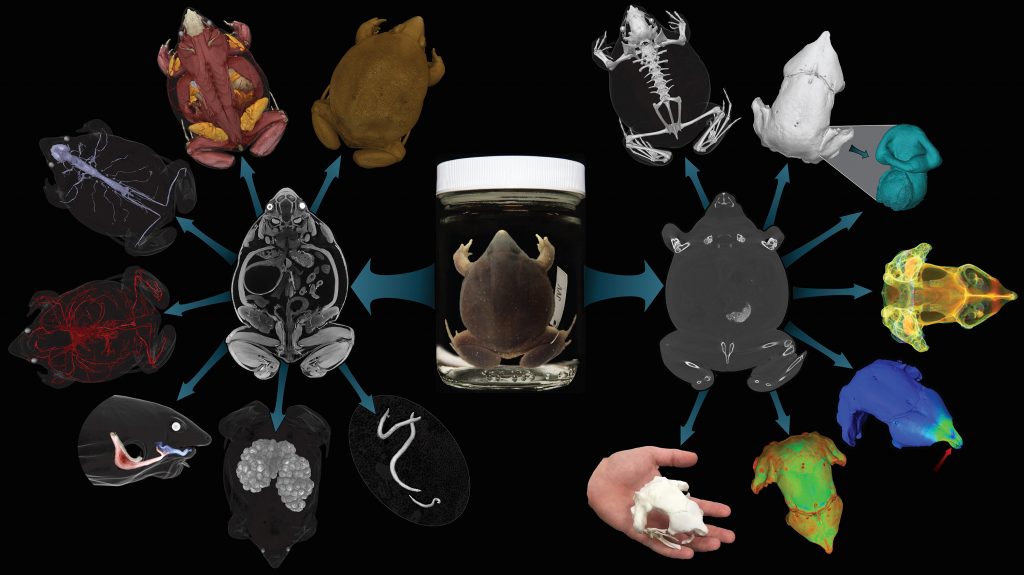
While addressing animals on the endangered species list is a major undertaking, 3D scanning and 3D printing can preserve these Vanishing Legacies.
Biodiversity in 3D
In 2017, an ambitious project took root. “Scan all vertebrates” sought to do just that: 3D scan every vertebrate animal. The project summary explains:
“The oVert (openVertebrate) Thematic Collection Network (TCN) will generate and serve high-resolution digital three-dimensional data for internal anatomy across vertebrate diversity. At a network of digitization centers across the US, we will CT-scan >20,000 fluid-preserved specimens representing >80% of the living genera of vertebrates. This will provide broad coverage for exploration and research on all major groups of vertebrates.”
Project participant the University of Kansas further notes:
“The project, ‘Open Exploration of Vertebrate Diversity in 3D,’ or informally, the ‘scan all vertebrates’ project, aims to run 20,000 preserved vertebrate specimens from university and museum collections through computerized tomography, or CT scans, over the next 4 years. Scientists from the 16 participating institutions hope the oVert museum digitization effort will form the backbone of future research in fields such as developmental biology, evolution, and biomimetics. The project will cover about 80% of living vertebrate genera.”

3D files, including some available for general educational 3D printing, are available via the massive open source MorphoSource project. The oVert project is a significant source of anatomical data on vertebrates — and just a small part of the MorphoSource collection.
The oVert scans captured over the last four years are laying the foundation for intriguing research across a huge variety of species. Some is, naturally, very specific.
This month a Florida Museum of Natural History paper presented findings, for example, that amphibian teeth have been changing significantly through evolution and now “only one frog, out of the more-than 7,000 species, has true teeth on both upper and lower jaws.” These findings were drawn from a wealth of hundreds of micro CT scans with full 3D data.
3D Printing Vanishing Legacies
The oVert project is also a pivotal part of a large collaboration emerging now to 3D scan and 3D print animal species that are extinct or critically endangered.
The project, Vanishing Legacies, will debut at this autumn’s Dutch Design Week. Launched by Design Academy Eindhoven, Vanishing Legacies also includes work directly with the Florida Museum of Natural History and the Smithsonian, and drawing from oVert project scans.
“The aim of the project is to capture the diversity of nature through 3D-printing and to secure space for this in natural history and art museums,” explains a recent release from DMG Digital Enterprises.
DMG Digital Enterprises, for its part, is a sister company of the long-established DMG Dental Material Gesellschaft. A foundation in the dental industry moves into the 21st century through the younger side of the business, which has developed an interesting line of high-precision 3D printing resins. These resins, under the MOIIN name, have expanded beyond dentistry and are now highlighting the complicated anatomies of endangered species — including in jewelry form.

“With its smooth surface and subtle shine, MOIIN’s highly aesthetic Nano Rigid is pretty much perfect for replicating bones and skeletons. The castable MOIIN Wax Cast, with 30% pure wax content, is great for transforming skeletons into wearable pieces of jewellery as a way of raising awareness of endangered species,” says Marlo Lyda, the designer responsible for the project at the Design Academy.
MOIIN Nano Rigid is a ceramic-filled resin typically used for creating functional objects and prototypes. MOIIN Wax Cast is a resin with high wax content developed to create residue-free burn-out molds for highly detailed jewelry making.
As the Vanishing Legacies project comes together to highlight these endangered and extinct animals, 3D printing will reveal the complexities of their anatomy. This October, the 3D prints will be on exhibit from the Design Academy of Eindhoven at Dutch Design Week — a stage that’s certainly no stranger to 3D printing.
Via MOIIN Resins
